Refresh and replenish with a simple yet delicious homemade electrolyte drink! Think gatorade, but without all the added sugars, dyes and artificial ingredients.
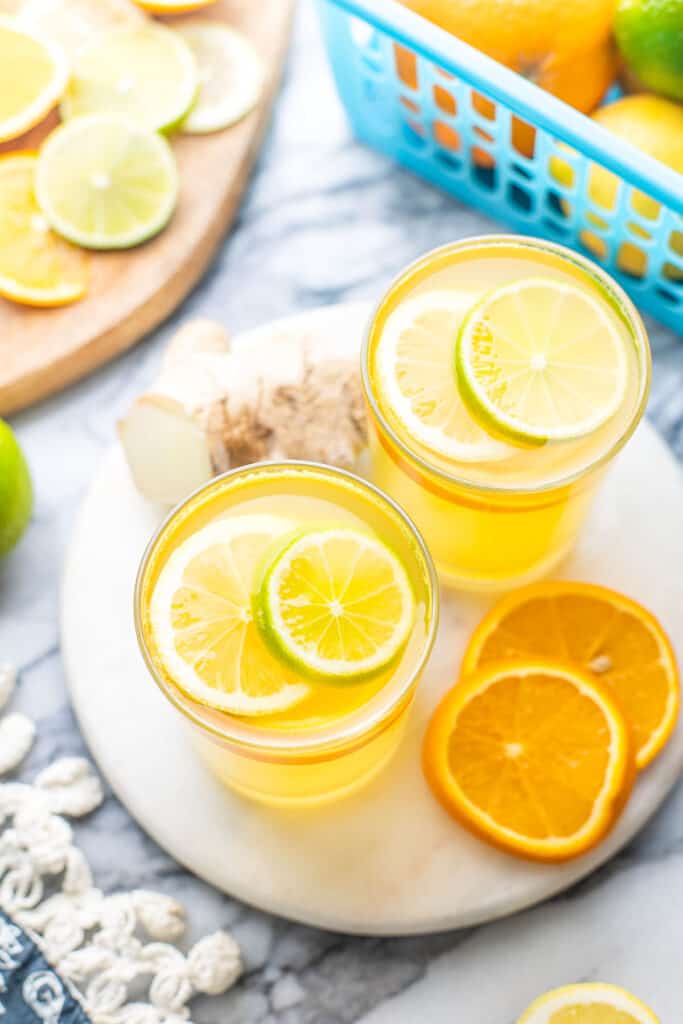
Want to learn how to make your own hydration drink with simple ingredients you likely already have in your own kitchen?
First Things First: What are electrolytes?
Electrolytes are essential minerals (salt, potassium, bicarbonate, etc) that conduct electrical charges when dissolved into water.
They play an important role in the regulating the nervous system and keeping you hydrated.
Signs of electrolyte loss or depletion include: nausea, headaches, fatigue, low blood pressure and muscle cramping. Do you feel hungover? You probably need more electrolytes in your system!
More Foods that Replenish Electrolytes
In fact, any time you find your self losing a lot of fluid, whether that be a stomach bug or heavy exercise, it’s likely you find yourself low on electrolytes. Certain medical conditions (like PoTS) and poor diets can also lead to an electrolyte imbalance.
While it’s easy to forget – human beings are electrical beings and we’re made up of mostly water. With this in mind, it’s no surprise that electrolytes are essential for good health.
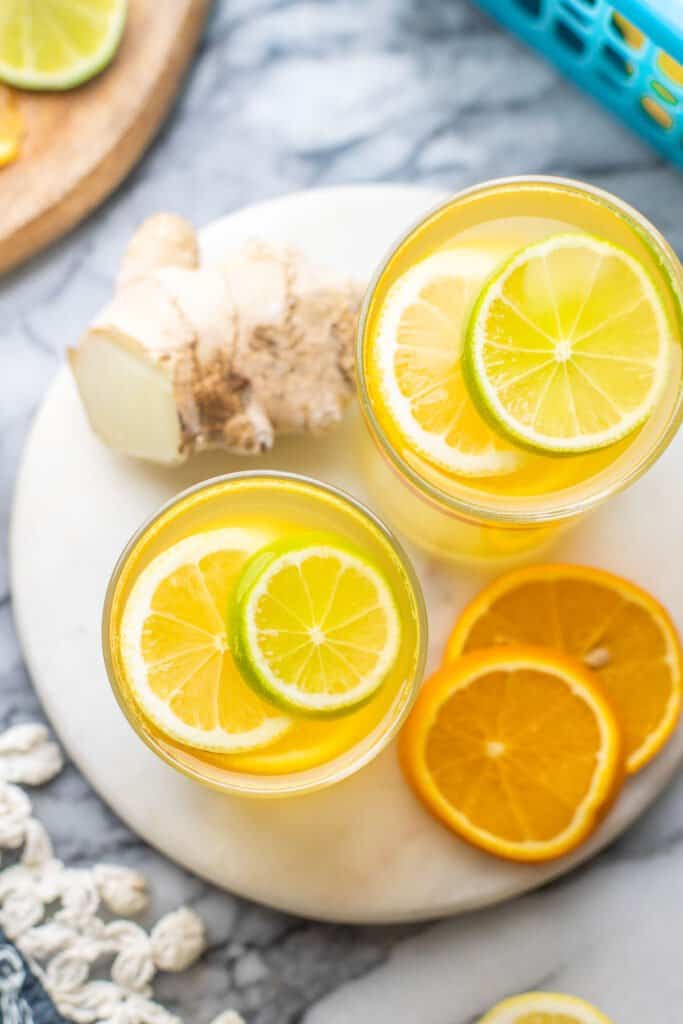
The Original Energy Drink
Despite the high sugar content, I totally understand that traditional sports drinks and general energy drinks do have real benefits.
Gatorade was originally created in 1965 as a means to combat heat exhaustion for the University of Florida football team (the Gators). Between the excessive heat, humidity and strenuous exercise, the Gators were depleted. This translated to excessive weight loss, sluggish performance and sometimes even fainting.
The fix? Basically, a team of researchers worked together to create what was essentially lab-made sweat that footballers would drink for electrolyte replacement.
As you can imagine, sweat-in-a-bottle didn’t exactly taste great. It was however extremely effective. The year following the introduction of Gatorade, the Gators when on to the Orange Bowl for the first time in the schools history.
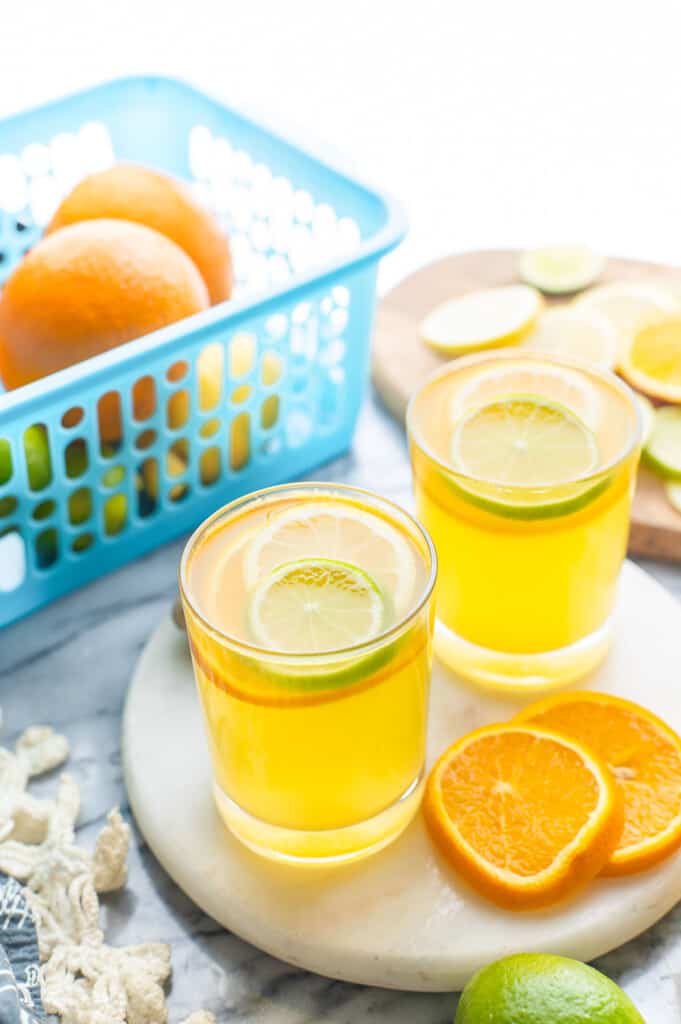
How to Make Your Own Homemade Electrolyte Drink
Fortunately for us, it’s actually quite easy to make a DIY electrolyte drink that tastes good without the excessive added sugar.
All you need is about 20 minutes, a pot and a few natural ingredients you might even have already.
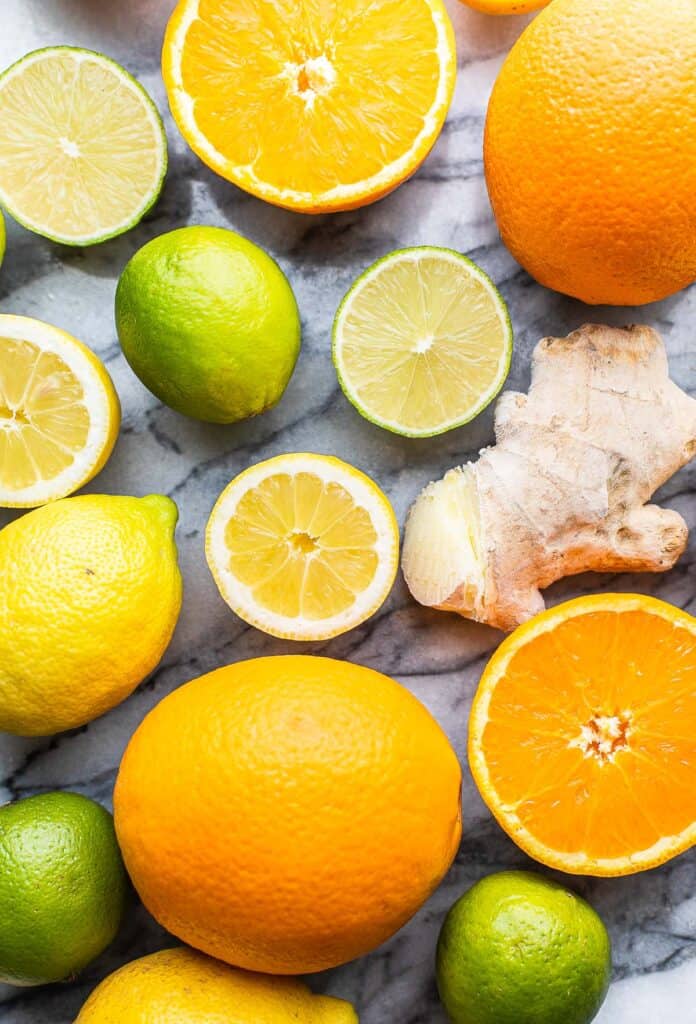
Ingredients
- Citrus Juice
- Orange juice, lemon juice and lime juice add small amounts of citric acid and Vitamin C to support the immune system.
- Fresh Ginger
- Ginger is an anti inflammatory food that has been shown to reduce nausea and headache pain (both symptoms of electrolyte depletion.
- Water
- You can get fancy here if you want with filtered or mineral water, but I simply use plain water from the tap.
- Coconut water is already basically a natural electrolyte drink because is contains potassium, sodium and manganese. Use this for an even more hydrating experience!
- Baking Soda (sodium bicarbonate) & Salt (sodium chloride)
- If you’ve ever wondered why sweat tastes salty it’s because it contains quite a lot of sodium (an electrolyte). While lemons do naturally contain electrolytes and other trace minerals, the addition of baking soda and elevates the amount of electrolytes making this an even more hydrating drink.
- Because of how they are processed, sea salt and pink Himalayan salt contain more trace minerals compared to kosher salt and table salt. For the benefit of a drink like this that is meant to nourish and replenish sea salt might be a better option to maximise nutrients, but the difference is so minimal in these amounts that it doesn’t actually matter much here. Use what you have.
- Natural Sweetener
- Use maple syrup for vegan and low fodmap options.
- Raw honey is always great to use when you can (like this honey simple syrup!). Raw honey is less processed meaning it has likely retained more nutrients. It’s also great to support local beekeepers when possible. That being said – use what you can find and afford and don’t sweat it!
Steps
Altogether, this homemade electrolyte drink recipe is super easy to make with only a few steps and little effort. A quick overview of the steps:
- Combine water & ginger in a sauce pan.
- Bring to a simmer.
- Stir in the baking soda and salt.
- Remove from the heat and stir in the sweetener.
- Strain out the pulp and solids.
- Cool and enjoy.
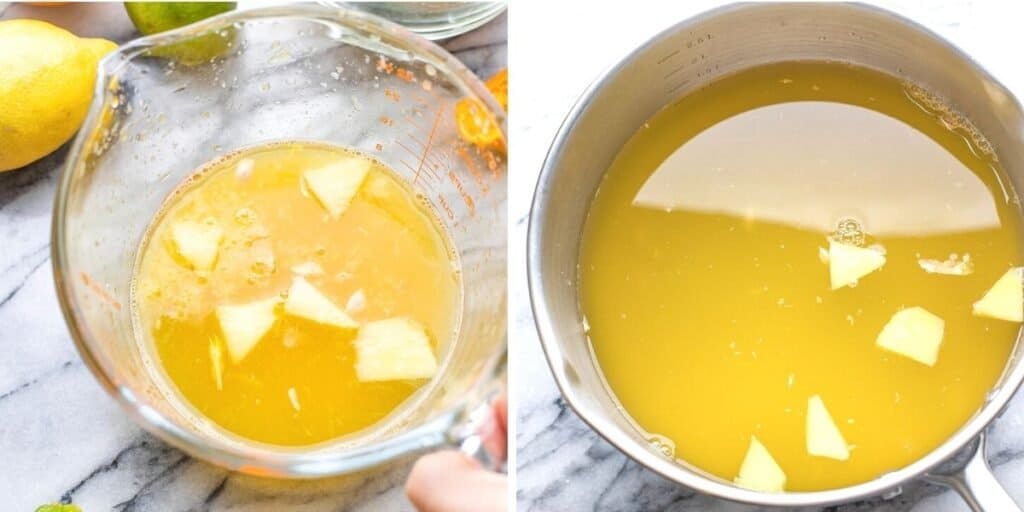
A couple of tips before you begin:
- Don’t worry about fishing out the seeds before you begin because you’re going to strain your drink at the end.
- Before slicing it up, gently smash your ginger with a rolling pin or the side of a large knife (carefully!). This will soften it up making its flavor even more accessible.
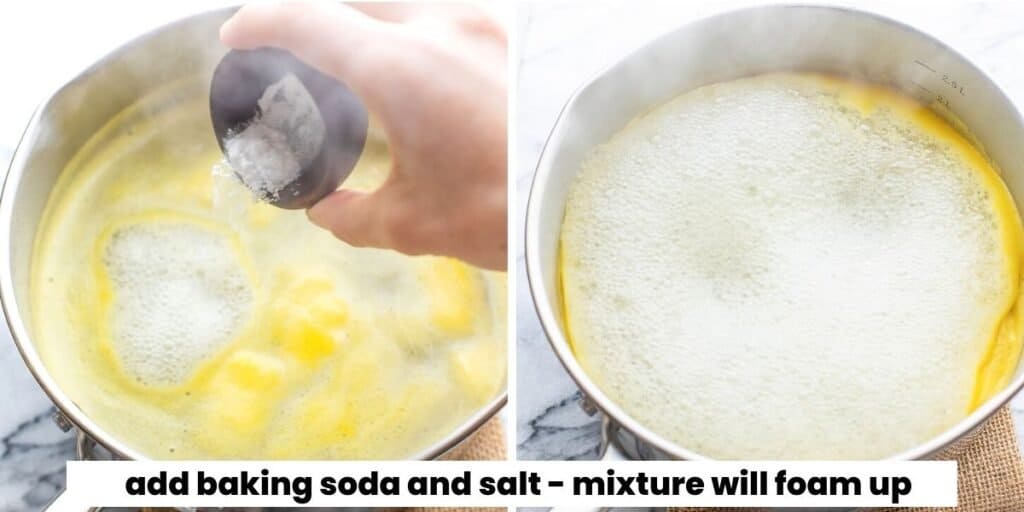
Why does it fizz up?
Right after you add the baking soda and salt to the pot you should notice that the contents of the pan start to foam up a bit.
This is because you’re witnessing a chemical change, an acid-base reaction, take place.
When the baking soda (the base) makes contact with the citrus (citric acid), the two react and create carbon dioxide (the bubbles) and sodium citrate.
Sodium citrate, by the way, is another electrolyte that is shown to help your body absorb fluids and others electrolytes when combined with glucose (aka sugar).
- Side Note: This chemical reaction happens often in baking, you’re just not able to see it happen quite so obviously. The reason why muffins and cookies puff up in the oven is because your baking soda (and baking powder) react to an acidic ingredient (cocoa powder, butter milk, etc) to create gas bubbles (carbon dioxide) which adds volume.
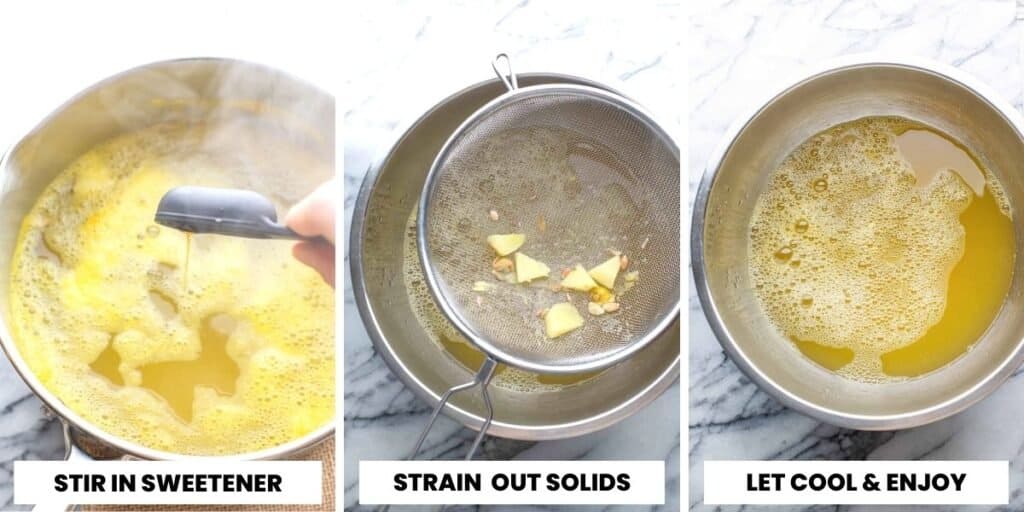
Who is the drink good for?
Professional athlete or not – your body needs to maintain a healthy balance of electrolytes in order to thrive.
Times where electrolyte drinks are particularly useful:
- Before and after working out – especially if you experience muscle cramps after working out. Go eat a banana and then make this drink!
- During or after illness – especially one where you struggle to hold down food. This is basically a homemade pedialyte recipe.
- In the summer or whenever it’s particularly hot outside – Dehydration can really sneak up on you in the heat.
- After a night of drinking – Hangover symptoms are essentially symptoms of electrolyte depletion.
- If you struggle with low blood pressure – Low blood pressure symptoms can manifest in a few different ways. Some of the more common symptoms dizziness, fainting, fatigue. If you’re someone who has PoTS you may benefit by increasing or being more mindful about your electrolyte intake. I started making this back in 2015 after my husband Mike was first diagnosed with PoTS. Over time his health and experience with PoTS has improved, but this drink did help when he was really struggling.
- As always, if you have a medical condition you should always consult you doctor before listening to some rando on the internet!
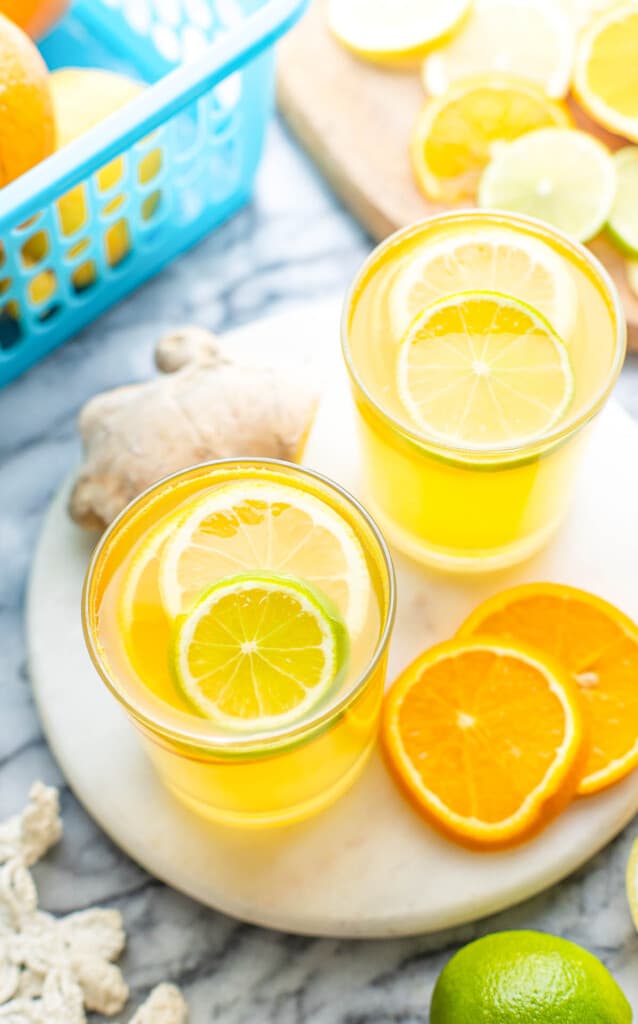
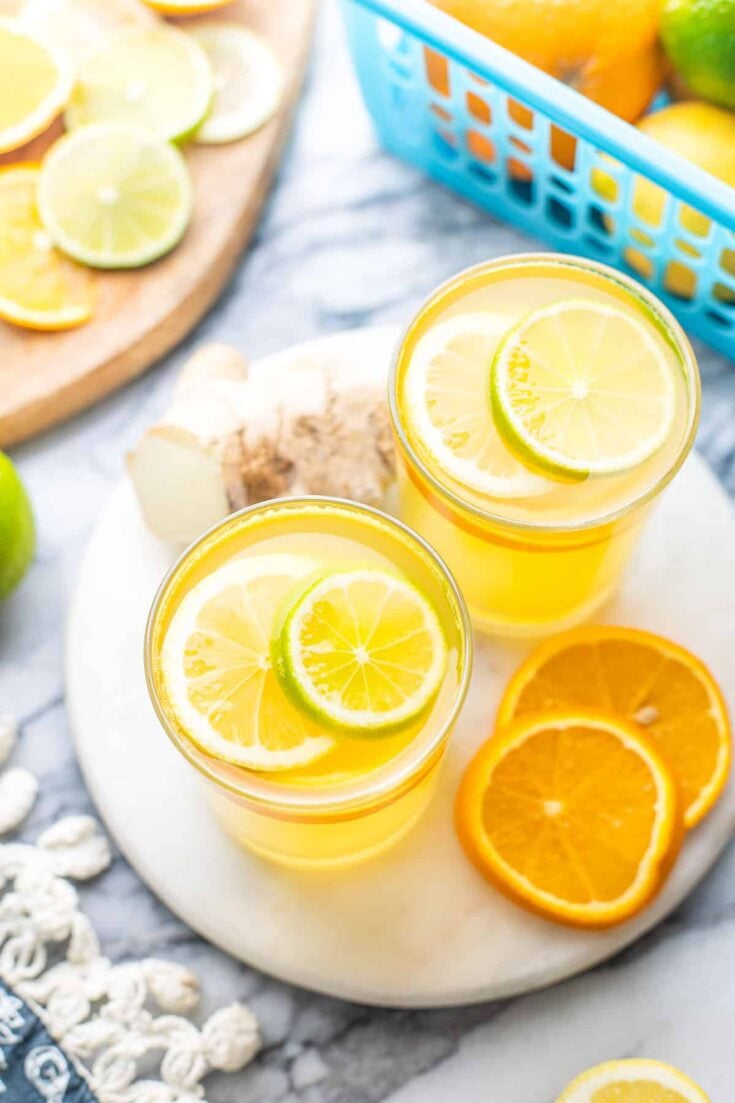
Homemade Electrolyte Drink
Refresh and replenish with a simple yet delicious homemade electrolyte drink! Think gatorade, but without all the added sugars, dyes and artificial ingredients.
Ingredients
- 4 cups of water (960 ml)
- 1-2 inch chunk ginger, smashed and roughly chopped
- ¼ tsp baking soda
- ¼ tsp sea salt
- ½ cup fresh orange juice (120ml)
- ¼ cup fresh lemon juice (60 ml)
- 2 tbsp fresh lime juice (30 ml)
- 2-3 tbsp pure maple syrup or honey (see notes for alternatives)
Instructions
Stove Top
- Add water and ginger to a medium sized sauce pan. Place over a medium heat and bring to a simmer. Cover and let simmer about 10 minutes.
- Take the pot off the heat. Add the baking soda and salt to the pot and stir until both salt & soda has dissolved. The liquids will foam up after you add the baking soda so keep an eye on the pot to watch for over flow. The foaminess will reduce after a minute or so.
- Stir in the orange, lemon and lime juice along with maple syrup or honey.
- Place a fine mesh strainer over a large, heat safe bowl. Pour the electrolyte drink into the bowl through the strainer to filter out the solid ginger pieces and citrus seeds. Taste and sweeten with more maple/honey if needed..
- Serve hot or cold. To serve cold, wait for the juice to cool fully before transferring to refrigerator friendly closed containers. Keep in the fridge for up to 5 days and enjoy or pour into ice cube moulds and freeze. Electrolyte ice cubes can be added to water or juice for an extra boost of hydration.
Notes
What Type Of Sweetener?
- Use maple syrup for vegan and low fodmap options.
- You can use a low carb sugar alternative instead, but you will need to add the correct amount at your own discretion. Check the packaging labels for your specific sweetener for guidance. If in doubt, start out with a small amount of sweetener, taste and add more as needed.
Nutrition Information
Serving Size:
about 1 cup (240ml) Calories: 65Total Fat: 0gSaturated Fat: 0gTrans Fat: 0gUnsaturated Fat: 0gCholesterol: 0mgSodium: 213mgCarbohydrates: 18gFiber: 0gSugar: 9gProtein: 0gMore Delicious & Healthy Ways to Hydrate
- Mint Cucumber Lemonade
- Healthy Strawberry Lemonade With Chia Seeds
- Mango Lassi
- Fresh Basil Lemonade
- Chai Tea Concentrate (Starbucks Copy Cat)
- Healthy Strawberry Shake (With Hidden Veg)
- Sparkling Cardamom Rose Mocktail
- Golden Milk Frappuccino – Paleo & Vegan
- Healthy Frozen Lemonade
- Ginger Turmeric Tea With Lime (Herbal Tisane)
- Ginger Switchel Recipe (Haymaker’s Punch)
- Brazilian Lemonade (Limonada Suíça)


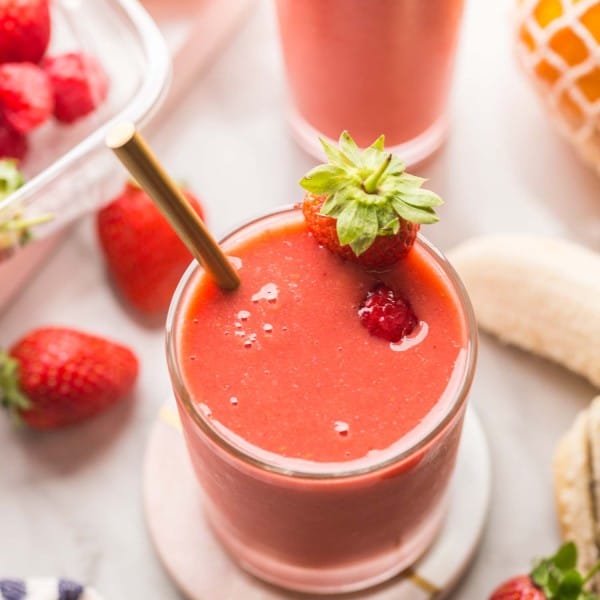
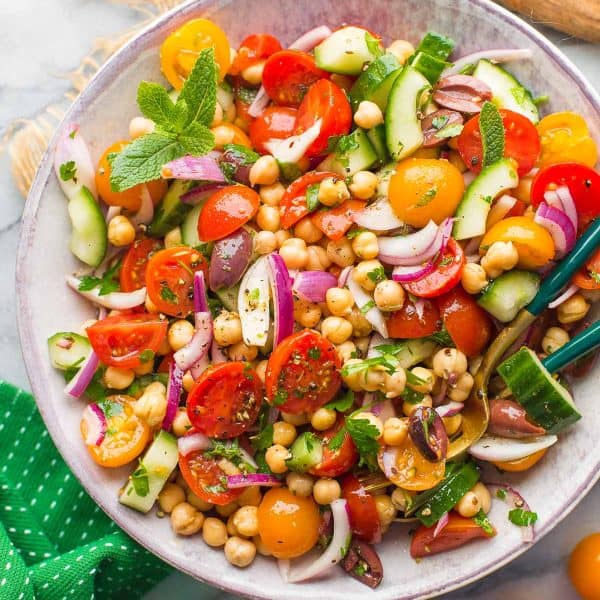
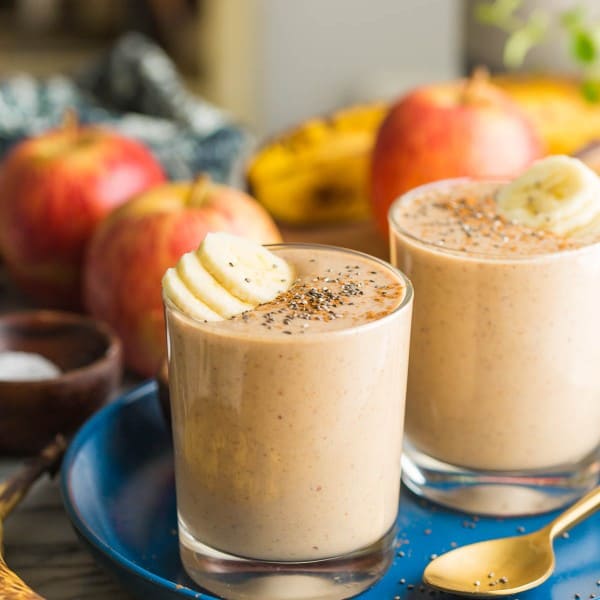
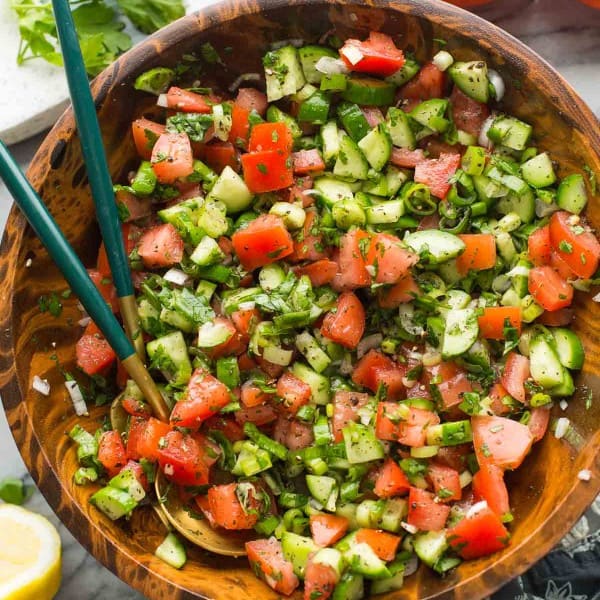
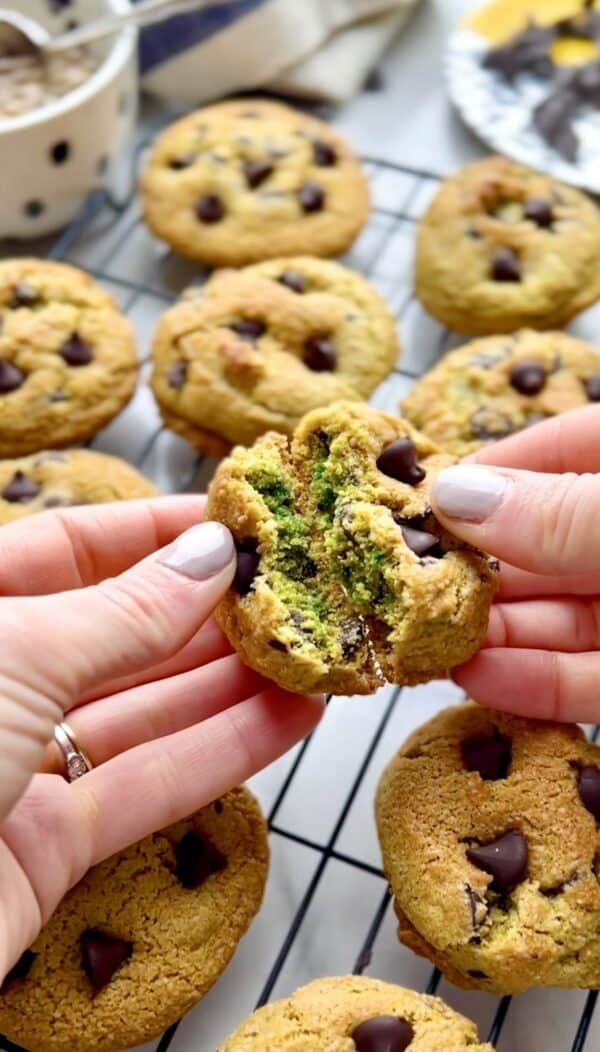
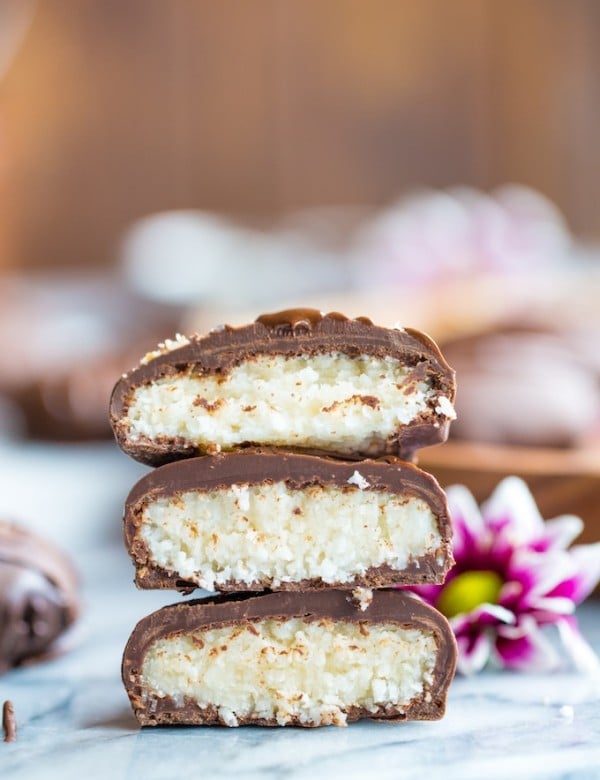

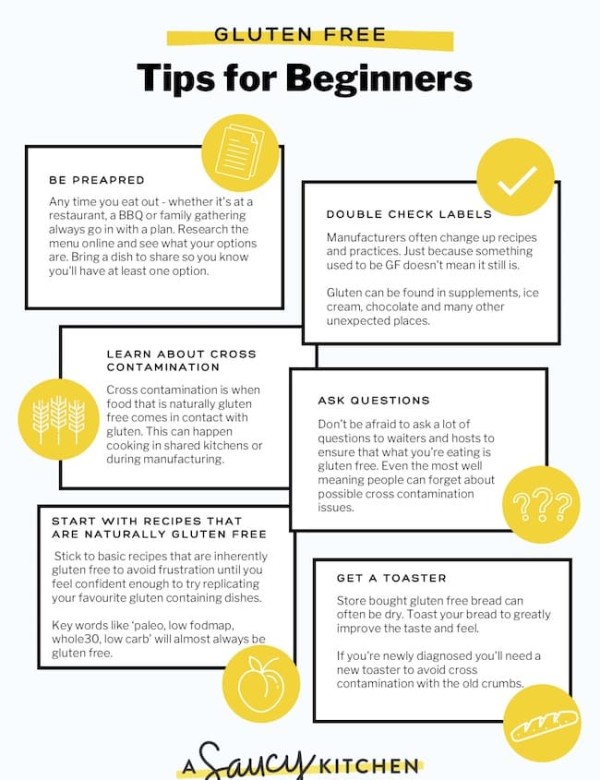
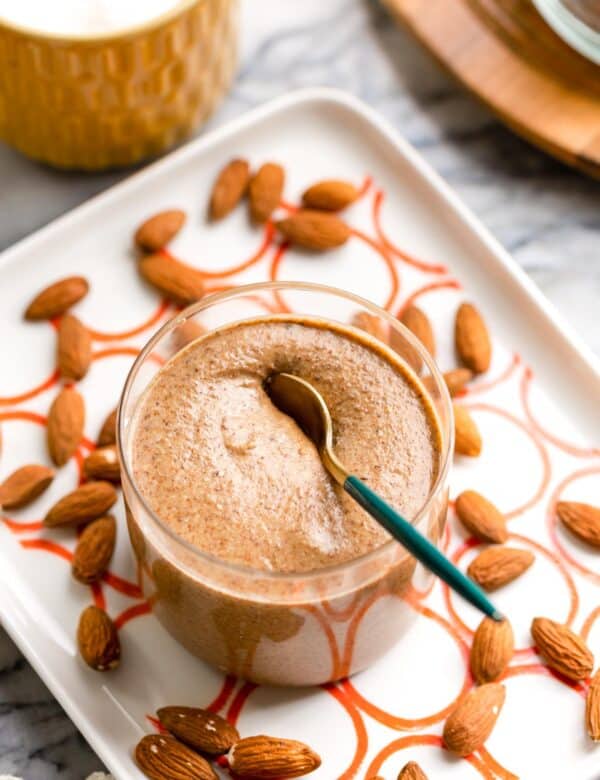
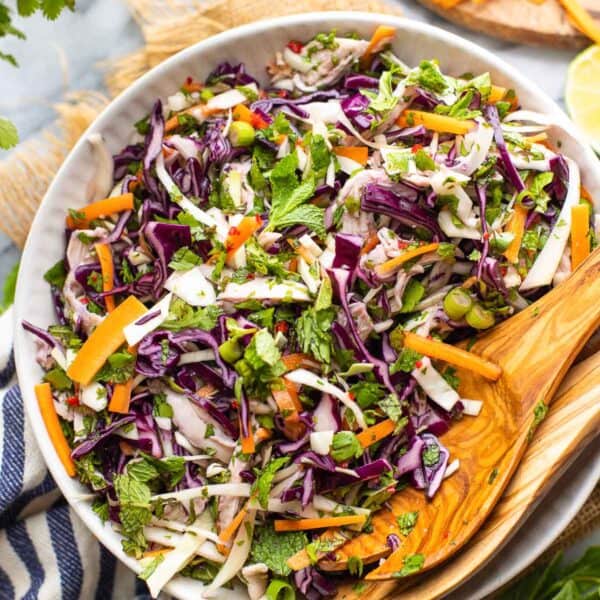
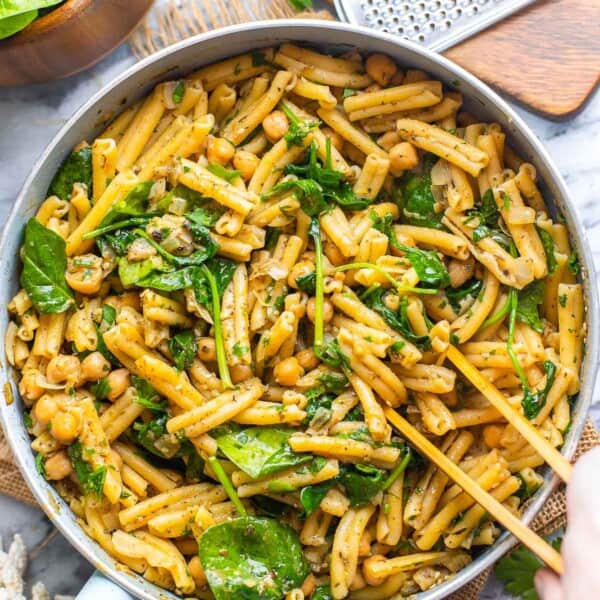
Vanessa says
Hello, lovely idea for the drink. However I just dont understand why you would simmer the citrus juices since vitamin C is heat unstable. Can we just simmer the ginger and then add baking soda and once cooled enough add the citrus juices? I am assuming the baking soda is there to reduce the acidity?
Thanks!
Sarah Nevins says
Hi Vanessa! You are totally right – thank you for asking/ pointing that out to me! I didn’t understand that about vitamin C when I first shared this recipe. My new recipes like this one do take the vitamin C thing in mind, but I totally forgot to make any adjustment to this recipe. For max nutrient retention, simmer the water and ginger first then take the pot off the heat. Add the baking soda and salt, followed by the citrus & sweetener.
Jessica Myers says
I just want to say that all the commentors asked very helpful questions and I very much appreciate that you took the time to answer them because you were very thorough in your answers! Thank you!
Sarah Nevins says
Hi Jessica! Thank you so much for saying that – it genuinely makes my day to know any of this can be helpful!